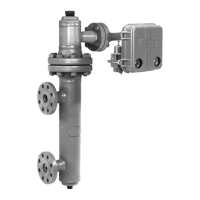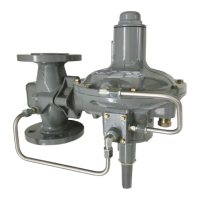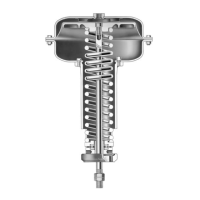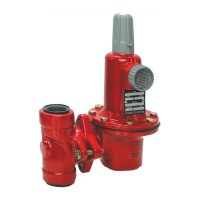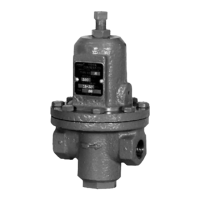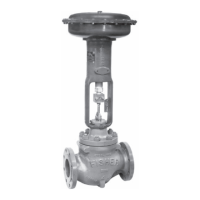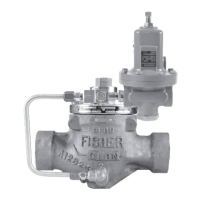Instruction Manual
D103296X012
2052 Actuator
June 2017
9
Property Class 8.8 material or equivalent. Loosen the nuts (key 9) on the two fasteners in an equivalent manner to
relieve spring force.
3. Carefully remove all cap screws and hex nuts (keys 8 and 9) from the top casing assembly. The spring forces are
retained by the diaphragm rod assembly (key 10), allowing quick removal of the pressure retaining components.
4. Remove the top casing assembly and the diaphragm (key 11).
5. Inspect the diaphragm plate (key 6). If the diaphragm plate is damaged or if further disassembly of the actuator is
required, proceed to the Replacing Diaphragm Plate, Diaphragm Rod Assembly, and Spring(s) procedure.
6. Inspect the diaphragm and replace if necessary.
Assembly
1. Place the diaphragm (key 11) on the diaphragm plate (key 6), making certain that it is properly centered.
2. Observe the correct position of the loading connection fitting and install the top casing assembly (key 5). Replace
the cap screws and nuts (keys 8 and 9) which secure the top casing assembly to the actuator housing. Tighten the
nuts in an alternating fashion (see table 6).
3. Install the inlet piping to the top casing assembly.
Replacing Diaphragm Plate, Diaphragm Rod Assembly, and Spring(s)
Isolate the valve body from the process. Release process pressure and vent all actuator pressure.
Disassembly
1. Remove the supply tubing or pipe from the top casing assembly (key 5).
WARNING
To avoid personal injury from precompressed spring force suddenly thrusting parts away from the actuator, spring
compression must first be relieved. Closely follow the instructions below.
2. Loosen, but do not remove, all casing cap screws and hex nuts (keys 8 and 9). Ensure there is no spring force to the
top casing assembly (key 5). If spring force is detected against the top casing assembly, ensure the up travel stop
cap screw (key 23) is adjusted correctly to prevent over-rotation of the lever (key 14). Refer to figure 3. The travel
indicator screws (key 22) in the end of the lever should be in alignment with the travel scale screws (key 20). If the
up travel stop is confirmed to be adjusted correctly and force is still detected against the top casing assembly,
contact your local Emerson Instrument and Valves Service Center. Alternatively, replace two oppositely located
casing cap screws (key 8) with 100 mm (4 inch) long fully threaded M10 cap screws of ISO 898-1 Property Class 8.8
material or equivalent. Loosen the nuts (key 9) on the two fasteners in an equivalent manner to relieve spring force.
3. Carefully remove all cap screws and hex nuts (keys 8 and 9) from the top casing assembly. The spring forces are
retained by the diaphragm rod assembly (key 10), allowing quick removal of the pressure retaining components.
4. Remove the top casing assembly and the diaphragm (key 11).
5. Inspect the diaphragm plate (key 6).
a. To relieve spring compression, using a hex wrench, unscrew and remove the socket head cap screw (key 7) which
secures the diaphragm plate (key 6) to the diaphragm rod assembly (key 10). Remove the diaphragm plate.
6. Remove the spring (key 13) or springs (keys 12 and 13).
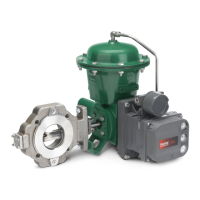
